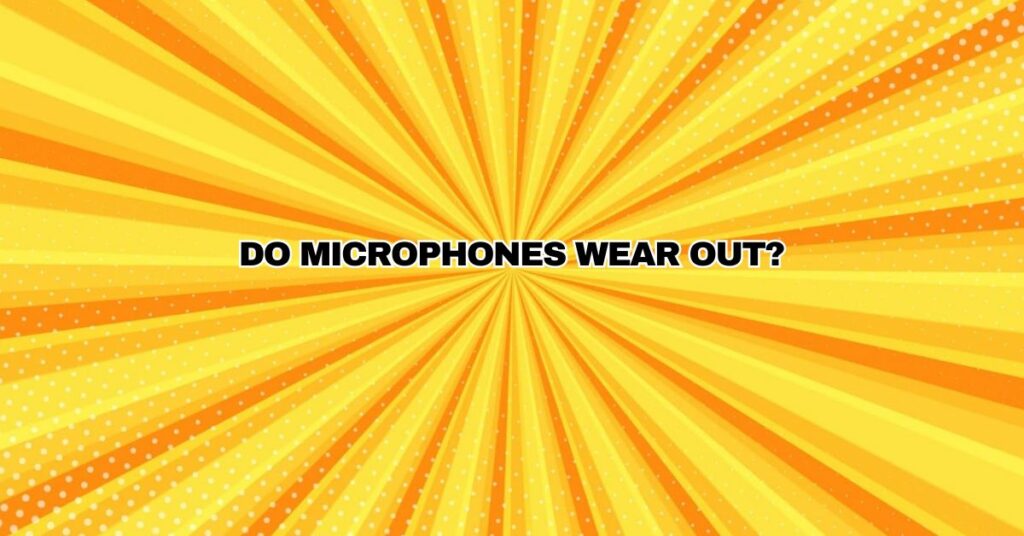Microphones are vital tools in various domains, from music production and live performances to podcasting, broadcasting, and online communication. Whether you’re a professional or a hobbyist, you may wonder: do microphones wear out over time? In this comprehensive article, we will explore the concept of microphone lifespan, the factors that affect it, and provide insights into proper microphone maintenance to maximize its longevity.
The Lifespan of Microphones
Microphones, like all mechanical and electronic devices, have a finite lifespan. However, the duration of a microphone’s serviceable life can vary widely based on several key factors. It’s important to understand that microphones don’t “wear out” in the same way as consumable products; rather, they can degrade over time due to various influences.
Factors Affecting Microphone Lifespan
- Build Quality: The overall construction and quality of materials used in a microphone play a significant role in its lifespan. High-quality microphones with robust components tend to have a longer service life than their cheaper counterparts.
- Usage Frequency: The frequency and intensity of microphone use have a direct impact on its longevity. Microphones used extensively in professional settings may wear out more quickly than those used infrequently.
- Environmental Conditions: The environment in which a microphone operates can be a substantial factor. Exposure to extreme temperatures, humidity, dust, and other adverse conditions can contribute to a shorter lifespan.
- Physical Damage: Accidental drops, impacts, or improper handling can cause physical damage to the microphone’s components, leading to reduced functionality or a shorter lifespan.
- Maintenance: Regular maintenance and proper care can significantly extend a microphone’s life. Neglecting maintenance can result in a shorter operational period.
- Element Type: The type of microphone element can impact its lifespan. Dynamic microphones, for example, tend to be more durable and long-lasting than delicate condenser microphones.
Proper Microphone Maintenance
While microphones do have a finite lifespan, there are several measures you can take to maximize their longevity:
- Cleaning: Regularly clean the microphone’s exterior, grille, and connector contacts. Use a soft brush or a lint-free cloth to remove dust and debris. Avoid using abrasive materials that could scratch the microphone’s finish.
- Storage: When not in use, store your microphones in a protective case to shield them from physical damage and environmental factors. Ensure that they are stored in a dry and temperature-controlled environment.
- Handling: Be cautious when handling microphones. Avoid dropping them or subjecting them to mechanical stress. Use a shock mount to isolate the microphone from vibrations.
- Wind Protection: If you’re using microphones in environments with strong winds or plosive sounds, invest in windshields or pop filters to prevent damage to the microphone element.
- Regular Inspections: Periodically inspect your microphones for signs of wear and damage. If you notice any issues, address them promptly to prevent further degradation.
- Avoid Moisture: Prevent moisture from coming into contact with the microphone element, as it can damage sensitive components.
- Use the Right Accessories: Always use appropriate cables, connectors, and stands for your microphones to prevent stress on the connections and microphone body.
Signs of a Worn-Out Microphone
As microphones age, they may exhibit various signs of wear and degradation. Common indicators that your microphone may need attention or replacement include:
- Reduced Sensitivity: The microphone may become less sensitive, requiring increased gain or input levels.
- Distortion or Noise: You may notice increased distortion or noise in the microphone’s audio output.
- Inconsistent Performance: Microphones may exhibit inconsistent performance, with intermittent dropouts or reduced output.
- Physical Damage: Visible signs of physical damage, such as dents, scratches, or loose components, may indicate a microphone in need of repair or replacement.
Conclusion
Microphones, while not immune to wear and tear, can enjoy a long and fruitful lifespan with proper care and maintenance. The key factors influencing a microphone’s longevity include build quality, usage frequency, environmental conditions, physical damage, and maintenance practices.
By implementing a robust maintenance routine, ensuring safe handling, and promptly addressing any signs of wear or damage, you can maximize the lifespan of your microphones and continue to enjoy the high-quality audio capture they provide for many years.

